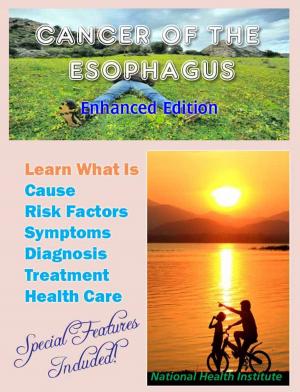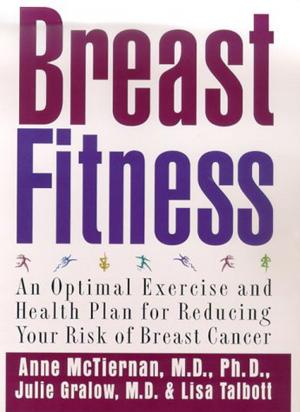An ABC of Prostate Cancer in 2015
Nonfiction, Health & Well Being, Health, Ailments & Diseases, Cancer| Author: | Alan Lawrenson | ISBN: | 9781310861567 |
| Publisher: | Alan Lawrenson | Publication: | December 3, 2014 |
| Imprint: | Smashwords Edition | Language: | English |
| Author: | Alan Lawrenson |
| ISBN: | 9781310861567 |
| Publisher: | Alan Lawrenson |
| Publication: | December 3, 2014 |
| Imprint: | Smashwords Edition |
| Language: | English |
An ABC of Prostate Cancer in 2015 provides the reader with comprehensive information on the very latest diagnosis tests that are available and now becoming routinely used in leading clinics, hospitals and specialist practice around the world. The use of multiparametric MRI to detect prostate cancer; its ability to enable precisely targeted biopsies to be taken and its use in the guiding the subsequent ablation process of the detected tumours, is transforming prostate cancer diagnosis and treatment. Genetics are also providing an ever increasing insight into the diagnosis of prostate cancer.
A leading urological surgeon who reviewed the book said: “All my registrars should get a copy of this book and fully digest its contents.” Another specialist said: “Every general practitioner (physician) in the country should read the book to bring them up-to- date on prostate cancer.” Not with standing these comments, the easy-to-read book, is targeted at the layman, and is written in easily understood language. The extensive glossary included again assist the reader.
The book provides the reader with more than 100 questions that prostate cancer sufferers should consider asking their doctors. Make sure you get the absolute most out of your time with your doctors, by preparing the vital questions to ask your doctors before your appointment.
It also details “My Journey over Four Continents to find the Best Cure”.
The book (76,500 words over 292 pages) is presented in three parts:
Part 1:My Initial Diagnosis
Part 2:Treatment Options
Part 3:My Prostate Cancer Experience
In Part 1, the book looks at what prostate cancer is and examines, in detail, PSA testing and its derivatives such as PSA density, PSA doubling time, free PSA, etc. It also looks in depth at the biopsy process and explains the increasing use of multiparametric MRI as a diagnostic tool. The staging and grading of prostate cancers are explained and the reader is introduced to prostate risk calculators.
Part 2 focusses on the 10 top treatments available to treat prostate cancer. Some of these treatments are broken down into multiple sub-sets. One such treatment is radiation, which is broken down into nine different forms of radiation, each of which is fully presented. Some of these, like proton beam therapy, might offer better alternative outcomes to some sufferers than more ‘popular’ treatments.
Whilst the book focusses mainly on the treatment of patients with low and intermediate risk prostate cancer that is localised, the treatment of metastatic prostate cancer is also briefly considered.
This part of the book concludes with a chapter on the all-important prostate cancer support groups.
Part 3 of the book details my consideration of various treatment options, my visits to three urologists and a radiation oncologist, my treatment selection process and my subsequent proton beam therapy treatment at the National Cancer Centre in South Korea. The book concludes by considering what I might do differently if I had to go through the process again.
What the book spells out, is the need for a newly-diagnosed prostate cancer sufferer to take charge of their own destiny, by learning as much as possible about their condition and not to make quick and possibly rash decisions whilst under what I term to be the “Cancer Anxiety Factor.”
The book contains an extensive Resource Listing which provides details of further reading that is available via the Web. It also provides a comprehensive Reference Listing to support the statements made within the book.
Hopefully, the presentation of the technical aspects of the diagnosis and treatment of prostate cancer within the narration of the author’s own prostate cancer challenge makes compelling reading.
An ABC of Prostate Cancer in 2015 provides the reader with comprehensive information on the very latest diagnosis tests that are available and now becoming routinely used in leading clinics, hospitals and specialist practice around the world. The use of multiparametric MRI to detect prostate cancer; its ability to enable precisely targeted biopsies to be taken and its use in the guiding the subsequent ablation process of the detected tumours, is transforming prostate cancer diagnosis and treatment. Genetics are also providing an ever increasing insight into the diagnosis of prostate cancer.
A leading urological surgeon who reviewed the book said: “All my registrars should get a copy of this book and fully digest its contents.” Another specialist said: “Every general practitioner (physician) in the country should read the book to bring them up-to- date on prostate cancer.” Not with standing these comments, the easy-to-read book, is targeted at the layman, and is written in easily understood language. The extensive glossary included again assist the reader.
The book provides the reader with more than 100 questions that prostate cancer sufferers should consider asking their doctors. Make sure you get the absolute most out of your time with your doctors, by preparing the vital questions to ask your doctors before your appointment.
It also details “My Journey over Four Continents to find the Best Cure”.
The book (76,500 words over 292 pages) is presented in three parts:
Part 1:My Initial Diagnosis
Part 2:Treatment Options
Part 3:My Prostate Cancer Experience
In Part 1, the book looks at what prostate cancer is and examines, in detail, PSA testing and its derivatives such as PSA density, PSA doubling time, free PSA, etc. It also looks in depth at the biopsy process and explains the increasing use of multiparametric MRI as a diagnostic tool. The staging and grading of prostate cancers are explained and the reader is introduced to prostate risk calculators.
Part 2 focusses on the 10 top treatments available to treat prostate cancer. Some of these treatments are broken down into multiple sub-sets. One such treatment is radiation, which is broken down into nine different forms of radiation, each of which is fully presented. Some of these, like proton beam therapy, might offer better alternative outcomes to some sufferers than more ‘popular’ treatments.
Whilst the book focusses mainly on the treatment of patients with low and intermediate risk prostate cancer that is localised, the treatment of metastatic prostate cancer is also briefly considered.
This part of the book concludes with a chapter on the all-important prostate cancer support groups.
Part 3 of the book details my consideration of various treatment options, my visits to three urologists and a radiation oncologist, my treatment selection process and my subsequent proton beam therapy treatment at the National Cancer Centre in South Korea. The book concludes by considering what I might do differently if I had to go through the process again.
What the book spells out, is the need for a newly-diagnosed prostate cancer sufferer to take charge of their own destiny, by learning as much as possible about their condition and not to make quick and possibly rash decisions whilst under what I term to be the “Cancer Anxiety Factor.”
The book contains an extensive Resource Listing which provides details of further reading that is available via the Web. It also provides a comprehensive Reference Listing to support the statements made within the book.
Hopefully, the presentation of the technical aspects of the diagnosis and treatment of prostate cancer within the narration of the author’s own prostate cancer challenge makes compelling reading.















